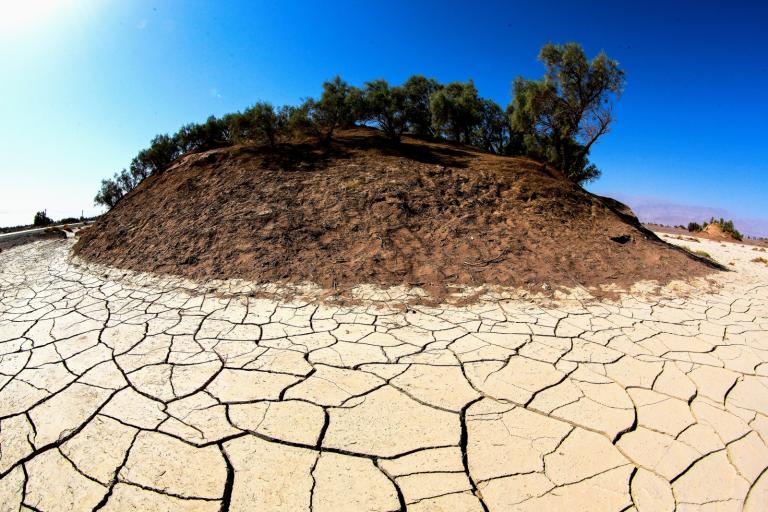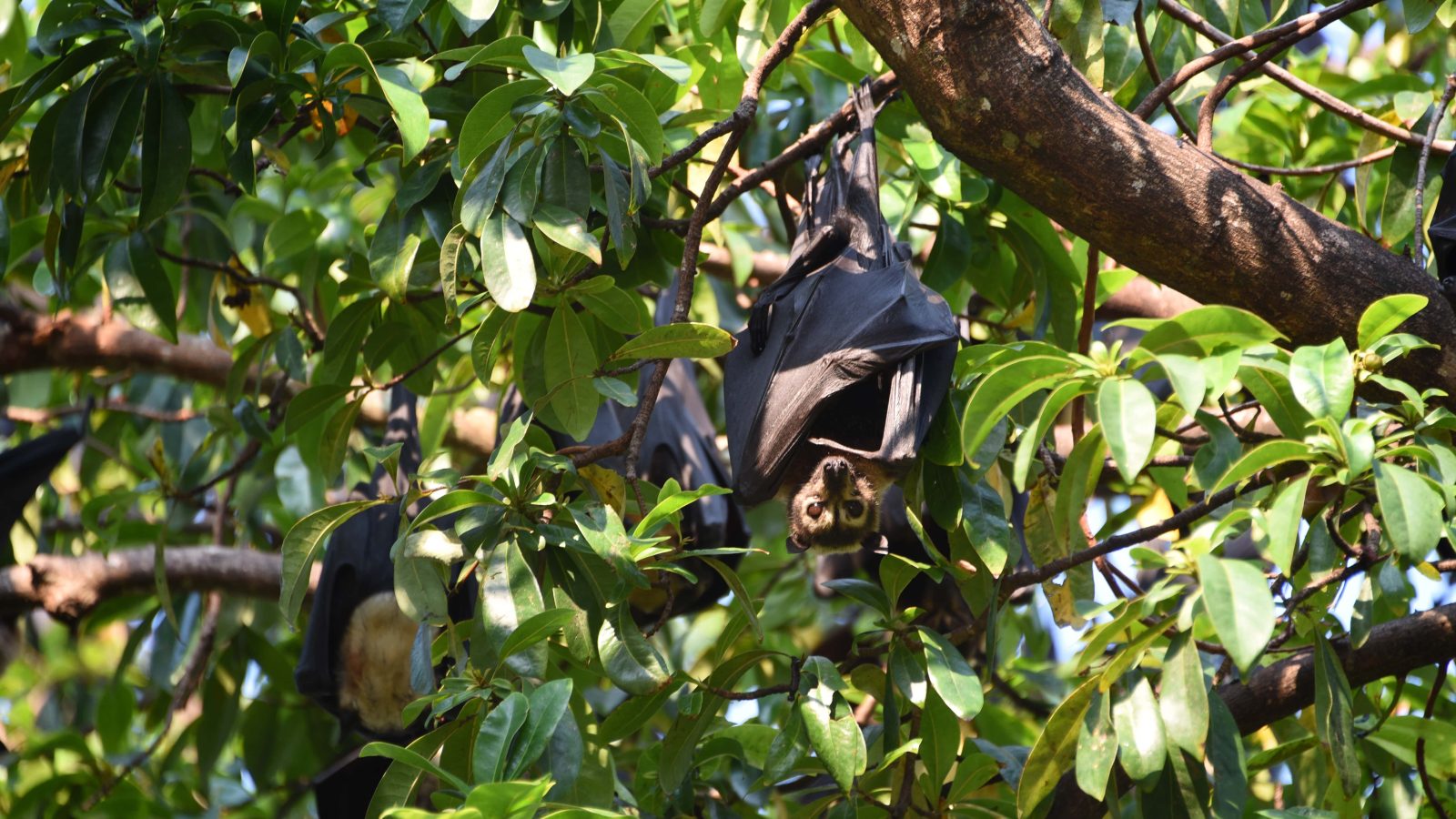Although COVID-19’s precise origins may always remain a mystery, the disease that has claimed more than 6 million lives, halted global economies, and caused immense suffering most likely came from a bat. The scientific term for the phenomenon in which a virus jumps from one species to another is “viral spillover.” A new study shows that climate change is creating ideal conditions for viral spillover, which could have resounding implications for human health in the not-so-distant future.
Research published in the science journal Nature on Thursday shows global warming is shaking the world like a snow globe, causing mammals to move into new areas in search of food and comfortable habitat, and at a faster rate than they would if human-caused warming didn’t exist. Those mammals carry diseases that can jump from animal host to animal host and, eventually, to human beings, sparking pandemics like COVID-19, or worse. Basically, climate change is making it difficult for animals to social distance from each other.
“As the world changes, the face of disease will change, too,” Gregory Albery, a disease ecologist at Georgetown University and a coauthor of the new study, said at a press conference. “The coming decades will not only be hotter, but sicker.” The study projects that there will be at least 15,000 new viral transmissions between animal species in the next 50 years if the planet warms 2 degrees Celsius (3.6 degrees Fahrenheit).
The researchers got their results by analyzing the zoonotic diseases, or infectious diseases that can be spread between animal species, that circulate in wild mammals. Then, they looked at projections of geographic range shifts, or changes in the areas where species live, for more than 3,000 mammal species by the year 2070 under various climate change scenarios. By comparing these data sets and other data on land use change and biodiversity, the researchers were able to simulate potential future viral hotspots — areas where zoonotic diseases may spillover into areas of high human population density. They found that the Sahel region in northern Africa, the Ethiopian highlands, eastern China, and the Philippines are among the places poised to become tropical viral hotspots. Parts of East Asia and East Africa are already hotspots, the study found. The areas where species are likely to mix and potentially exchange diseases are located on mountainsides and other places where species coming from different directions meet up.
“Unequivocally, in every simulation we do, every way we change the parameters and the data, climate change is creating inumerable hotspots of future zoonotic risk or present day zoonotic risk right in our backyard,” Albery said.
In addition to mapping out future areas of concern, the study demonstrates that climate change and land use change (or the development of wild land for human activities like agriculture) are already having an impact on the way disease jumps between animal species in the wild. The researchers expected that most disease-swapping encounters between mammal species would occur later this century, but instead they found that more of these first encounters will happen between 2011 and 2040.
“Our simulations suggest that in the next half-century, this process will completely restructure the global mammal-virus network,” Colin Carlson, a coauthor of the study and an assistant research professor at Georgetown, told Grist.
When it comes to global warming, the name of the game is limiting damage. Every degree of warming averted helps limit additional suffering. But curbing warming won’t curb the spread of disease. The roughly 1 degree Celsius (1.8 degrees Fahrenheit) of global warming that has occurred so far has already created many climate-related opportunities for viral spillover. And slowing down climate change — by, for instance, limiting it to the less than 2 degrees C (3.6 degrees F) of warming that the Paris Agreement calls for — actually greases the wheels of spillover. If the planet heats up extremely quickly, animals won’t be able shift their ranges fast enough and will perish as a result. But slower warming gives them time to adapt and move around. “Overall, our results indicate that a mild perturbation of the climate system could create thousands of new opportunities for viruses to find new hosts,” the study says.
Daniel Brooks, a professor emeritus at the University of Toronto and coauthor of a book on emerging infectious diseases called The Stockholm Paradigm: Climate Change and Emerging Disease, pointed out that this study, which he was not involved in, provides an incomplete accounting of the disease risks of climate change. “This particular contribution is an extremely conservative estimate of the potential for emerging infectious disease,” he said. Brooks said that the study underestimates both the types of animals that can spread disease, because it exclusively focuses on mammals, and the number of viruses circulating in the wild that can infect humans, because the authors didn’t take something called the stepping-stone concept into account. That theory holds that while a given pathogen may not be able to infect a given host, it can infect a different host which can, in turn, infect the original host, widening the umbrella of potential pathogens threatening that host. The true potential impact of climate change on infectious disease, Brooks said, is much larger than the study indicates.
The study’s authors call for the development and implementation of wildlife disease surveillance systems that can sound the alarm when diseases jump between animal hosts, which can help humans try to prevent that disease from spilling over and infecting a human host. Brooks has promoted a framework for developing such a surveillance system called the DAMA protocol. It advocates for documenting the existence of disease-causing organisms, then assessing those organisms based on how alarming they are to humans, monitoring the most significant ones, and, finally, taking action to alert the public if necessary before the pathogen makes its way into the human population. It’s clear from the way the world handled the COVID-19 pandemic that governments are a long way off from implementing the tenets of the DAMA protocol.
The authors of the new Nature study hope their research will help galvanize action to prevent future spillover events into human populations. But they also say that preventing all of these spillover events may be impossible. “Our study raises serious questions about whether that’s even an achievable strategy,” Carlson said. Any efforts to prevent viral spillover must be paired with equally dogged efforts to prepare the world for the pandemics that are surely headed our way.
“The main message is this,” Albery said. “This is happening, it is not preventable even in the best-case climate change scenarios, and we need to put measures in place to build health infrastructure to protect animal and human populations.”



